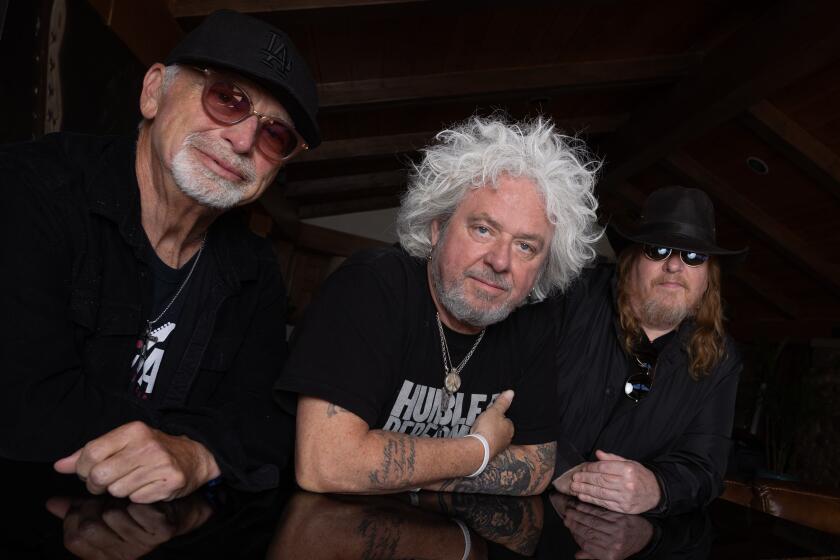Sandy Bull; Musician’s Exotic Work Influenced Rock Icons
Sandy Bull, an influential musician whose eclecticism and mastery of the guitar and such exotic stringed instruments as the oud presaged musical trends of the 1960s and beyond, died at his home near Nashville on Wednesday after a long illness. He was 60.
A pioneer of world music before the term was invented, Bull played acoustic and electric guitar and the 11-string North African oud in genre-fusing performances that blended classical, jazz, folk and Indian and Middle Eastern influences.
Although none of his songs became hits, his first album, “Fantasias for Guitar and Banjo,” became an underground classic when it was released in 1963. The next year, his second album, “Inventions,” combined Bach, Brazilian music and a unique version of Chuck Berry’s “Memphis.”
Those two records “anticipate just about every style assimilated by the rock groups of 1968,” Lillian Roxon, author of the Rock Encyclopedia, once said. She praised Bull’s music for its “sense of humor and sense of the mystical and an inspired craftsmanship.”
Admired by such better-known performers as Jimi Hendrix, Joan Baez and Steve Winwood, Bull was described as “eclecticism personified” in a 1970 Rolling Stones article and attained cult status.
“Only Sandy Bull would play an oud through a phase shifter or perform on the Indian sarod a soul ballad composed by the Isley Brothers,” a New York Times reviewer wrote after a Bull performance at Carnegie Hall.
Bull acknowledged his eccentric tastes, once telling an interviewer that “I like to think of my music as a dog whistle--only certain types respond.”
He was born in New York and grew up in Florida with his father listening to Hank Williams on the radio. His parents were divorced and he later moved in with his mother, a cabaret harpist who played Bach to boogie-woogie.
He began playing drums to bagpipe records when he was a boy, later switching to the guitar and banjo. By the late 1950s he was hanging out in New York’s Greenwich Village with artists such as Odetta, Mary Travers and Pete Seeger, playing gigs at such legendary clubs as the Gaslight, Folk City and the Bitter End.
He briefly studied musical composition and string bass at Boston University and played in Cambridge coffeehouses with a young Baez. In Los Angeles in the early 1960s he shared an apartment with Hamza El Din, a Nubian musician who inspired Bull to take up the oud, a fretless instrument from the lute family. During the same period, he was playing Bach on electric guitar and a five-string banjo, angering his folk contemporaries until Bob Dylan switched to electric, rock-oriented music a few years later.
“While everybody in the initial wave of the folk revival of the ‘60s was looking backwards, Sandy was looking forward,” said Jeff Hanna, a founding member of the Nitty Gritty Dirt Band, who grew up listening to Bull’s early Vanguard records. “He had a way of taking influences from everything, from Appalachian music to Indian music to African music, and combining it into this great Sandy gumbo. . . . He was a great musician.”
Bull’s signature piece was a 22-minute improvisation with jazz drummer Billy Higgins called “Blend,” which critics called “psychedelic folk.” The number took up one side of the “Fantasias” album, the first of four he recorded on the Vanguard label between 1962 and 1972.
A struggle with drugs ruined Bull’s career for many years. After completing a rehabilitation program in 1974, he began performing again.
Bull, who battled health problems in recent years, including lung cancer in 1996, is survived by his wife, Candy, a daughter and two sons.
More to Read
The biggest entertainment stories
Get our big stories about Hollywood, film, television, music, arts, culture and more right in your inbox as soon as they publish.
You may occasionally receive promotional content from the Los Angeles Times.











